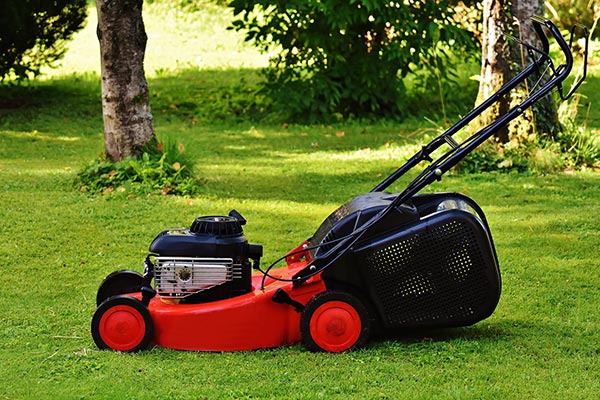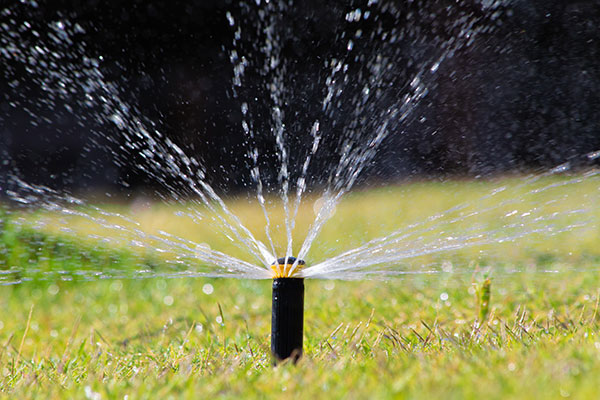If you live in the New Berlin or Brookfield area, then you are well aware of just how long the midwest winters can be. However, they are worth it for the glorious summers we get the privilege to experience. Between Lake Michigan and all of the parks, we are extremely spoiled with beautiful outdoor spaces to spend beautiful summer days. Another lovely space to spend these long summer days is our own yards. To make the most of our lawns, follow these summer tips and have the most coveted yard in the neighborhood.
When it comes to your yard, summer can be broken down into three periods and there are different tips that are appropriate for these times.
Early Summer
Fertilizer: Be sure to fertilize your lawn in the early summer. This can give your “warm-season grass” the nutrition it needs to grow lush and thick. Precise fertilization can also potentially make your lawn more drought and heat resistant. However, be sure to not add too much fertilizer, as this can potentially burn your lawn. Be sure to use a fertilizer specifically formulated for summer feedings.
Weeds: For a lawn to look its best, it is important to control weeds. Use a herbicide that is designed to eradicate broadleaf weeds, but will leave your lawn unscathed. However, it is good to be aware that these herbicides do have the potential for being harmful, so it is best to use these chemicals as little as possible. Instead of herbicides, and if able, it is best to hand pull the weeds.

Mowing: It is important to mow your grass high to encourage heat tolerance and strong root growth. The taller grass will also provide shade and prevent weeds from growing and competing with grass growth. Be sure to keep your lawn mower blades sharp, as dull blades will tear your grass, which makes it more susceptible to loss of moisture.
Your mower blades should be set higher, height dependent upon the type of grass in your lawn. It is a general rule that not more than ⅓ of the grass blade is trimmed each time you mow.
- Warm-season grass: 2 – 3 inches tall
- Cool-season grass: 3 – 4 inches tall
After mowing it is a good idea to leave your grass clippings, as these will decompose and help to feed your grass.
Pests: Insects particularly like the warm summer months, so it is important to protect your lawn from these pests. However, if you see bugs such as Japanese beetles, June bugs, etc. dining on your grass and causing destruction to your lawn, you will want to act immediately. If these pests are left untreated, they could potentially lay eggs and use your lawn as a feast. A good product to use is a preventative grub control, but be sure to follow all directions, so as not to cause harm to your lawn.
Mid-Summer
Fertilizer: Your lawn may need another dose of fertilizer at this point in the summer. Just as with early summer feeding, be sure to not over fertilize as you do not want to run the risk of burning your grass.
Watering: It is important to water your lawn deeply and infrequently. By mid-summer the dry, hot weather can greatly diminish the moisture from your soil. This lack of moisture can cause wilted grass, increase susceptibility to pests & weeds, and reduce shoot & root growth.
It is widely thought that it is best to water deeply about once a week. It is best that the water reaches 4 – 6 inches deep. To test this, use a screwdriver and push it into the soil. If you are presented with resistance – water more; if little resistance – water less.
The best time to water your lawn is early morning, preferably before sunrise. That way the soil is able to soak up water, before the sun has a chance to dry it out. Be sure to pay attention to the weather, so you are not watering when it is supposed to rain.

Late Summer
Aerate: Aerating your lawn isn’t strictly necessary, however, if you do decide to aerate you can use a core aerator to assist with breaking up the compacted soil. Aerating your lawn creates vents in your lawn to allow for air to more easily access grassroots, nutrients, and water. Aerating your lawn is also a great way to help it withstand natural stressors, such as excessive heat.
Overseed: If you notice bare or thinning patches, these can be signs that your lawn is struggling. Overseeding can help your lawn to recover to its past lushness. This can be accomplished by sowing extra seed over your existing yard and thickening your grass.
If any of this seems a bit overwhelming, call our professional team at Dan’s Tree Service. We are here 7 days a week to help you keep your lawn, trees and other landscaping areas beautiful. Contact us today!




